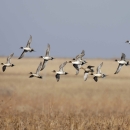About Us
There are only two known entry points for the cave: the sinkhole and spring. The sinkhole consists of a steep-sided, funnel-shaped depression about 50 feet in diameter located on a forested hillside. The spring entrance is located on a hillside under an overhang rock bluff. Most of the refuge consists of hillsides which support a mature climax community of oak and hickory.
Groundwater surfacing within the cave forms a stream which flows throughout the cave and at the outfall forms Logan Spring, which drains to Osage Creek just south of the refuge. Osage Creek is a major tributary of the Illinois River, which is the main drainage in southwestern Benton County, and their confluence is about 1.2 miles south of the refuge. In past years, spring water from the cave had a measured flow of approximately 5 million gallons per day and supplied the Logan community, a fish hatchery, and 49 fish ponds.
Our History
The Nature Conservancy’s Ozark Highlands Karst Program monitors rare species and water quality at more than 200 karst sites throughout the Ozarks, including Logan Cave. The program continually builds on the knowledge of karst features in Arkansas to refine conservation actions. The team recently worked with the U.S. Fish and Wildlife Service to delineate the above-ground boundaries of Logan Cave, which is home to the largest population of the endangered Benton cave crayfish, Ozark cavefish, and approximately 25,000 gray bats. The program also helps local governments develop plans for hazardous material spills and shares information about the proper disposal of chemicals. On a larger scale, the Conservancy works with developers and farmers to create management plans that reduce impacts on the precious landscape below ground.
To learn more about their work in the Ozark Karst, visit their website at the following link: TNC Ozark Karst Program
Other Facilities in this Complex
A National Wildlife Refuge Complex is an administrative grouping of two or more refuges, wildlife management areas or other refuge conservation areas that are primarily managed from a central office location. Refuges are grouped into a complex structure structure
Something temporarily or permanently constructed, built, or placed; and constructed of natural or manufactured parts including, but not limited to, a building, shed, cabin, porch, bridge, walkway, stair steps, sign, landing, platform, dock, rack, fence, telecommunication device, antennae, fish cleaning table, satellite dish/mount, or well head.
Learn more about structure because they occur in a similar ecological region, such as a watershed or specific habitat type, and have a related purpose and management needs. Typically, a project leader or complex manager oversees the general management of all refuges within the complex and refuge managers are responsible for operations at specific refuges. Supporting staff, composed of administrative, law enforcement, refuge manager, biological, fire, visitor services, and maintenance professionals, are centrally located and support all refuges within the complex.

